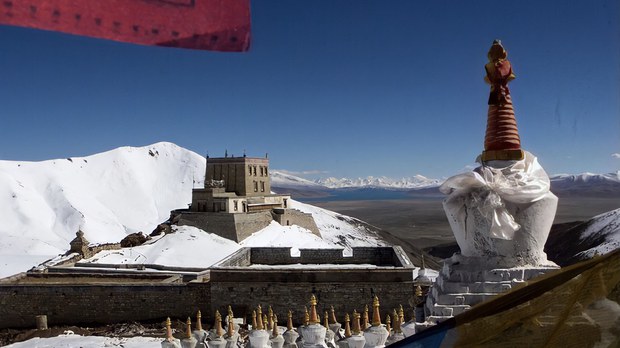
High Peaks Pure Earth has translated part of a series by Woeser written about Mount Kailash and Gyandrak Monastery and posted on her blog earlier this year in multiple parts.
Gyandrak Monastery in western Tibet is one of five monasteries surrounding Mount Kailash and a popular destination on the pilgrimage route today. In the series, Woeser delves into the history of Gyandrak Monastery and also remembers her trips there. Due to the length of the series, the translation starts below with Part 7 of the series and the tenth section.
“Encounters at Mount Kailash: A Travelling Monk, Local Tibetans and the Exiled Spiritual Leader South of the Sacred Mountain (Part 7)” By Woeser
10. A story from Mount Kailash: How Gyandrak Monastery was blown up during the Cultural Revolution.
Drigung Kagyu is one important lineage of the Kagyu school of Tibetan Buddhism. It has a long history, unique teachings and practice and has generated countless accomplished Yogas. An old proverb reads: “Don’t compete with the power of the Kashag government, don’t compete with the financial resources of the Karma Kagyu, don’t compete with the yogic force of the Drigung Kagyu.” For 800 years, its monasteries and spiritual places covered the entire Tibetan area and Himalayas. Its first and main monastery, Drigung Til Monastery, is located east of Lhasa in Meldro Gungkar County. It is famous for the Drigung sky burial ground and the great empowerment for the Monkey Year according to the Tibetan calendar (every 12 years). In 2004, my family and I went to the gathering grounds; the vast yet winding grasslands at the bottom of the monastery were densely packed with tents of all sizes. From loudspeakers came the chanting sounds of a senior monk, it was overwhelming and intimidating. We also visited the sky burial site and followed the crowd of devotees to a special kind of stone placed against another stone wrapped in a khata so as to show that the deceased had come to this burial ground. We heard that on the third day, in spite of heavy rain, the total number of devotees attending had crossed the two hundred thousand mark. They all stood silently in the rain, without umbrellas or hats; they wanted to receive the empowerment that allows the soul to leave their bodies without obstacles. Our guide said that seeing that kind of scene made him shed more tears than rain.
According to the accounts of Drigung Kyabgon Chetsang Rinpoche, traditionally, the Drigung Kagyu put great emphasis upon practicing Buddhism at Mount Kailash. Moreover, as researchers have pointed out: “…The Drigung Kagyu school has always been based in this vast territory, made up of Lake Manasarovar, the Kailash mountain range and its surrounding areas”[1]. The tradition of making a pilgrimage to the three sacred mountains is known by all Tibetan families: In the Year of the Horse, one circumambulates Mount Kailash in Ngari, in the Year of the Goat, one circumambulates the Lapchi Snow Mountain range located in today’s Nepal, and in the Year of the Monkey, one circumambulates the Tsari Mountain located at the intersection of today’s Lhokha Prefecture and Assam, India [2]. The founder of the Drigung Kagyu lineage, Jigten Sumgon, established this over 800 years ago, it is believed to be the body, speech and mind of the Chakrasamvara deity. According to historical records, the number of devotees pilgrimaging to each sacred mountain adds up to 55,525 each time. The three sacred mountains are of extraordinary significance to the practice of the Drigung Kagyu; there is another proverb that reads: “The masters of the three sacred mountains are the Drigung practitioners.”
Traditionally, during Saga Dawa that takes place on the fifteenth of the fourth month according to the Tibetan calendar, before the changing of the prayer flag pole and the raising of flags at the foot of Mount Kailash, a special Buddhist gathering would be held by the head Lama of Gyandrak Monastery. The monastery, located at a mountain ridge at the inner circle of the mountain, is the oldest and most important one around Mount Kailash. It belongs to the Kagyu school of Tibetan Buddhism; previous head lamas were sent by Drigung Til Monastery and were not only responsible for the Drigung rituals at the mountain, but also for those at the Himalaya foothills. According to Drigung Kyabgon Chetsang Rinpoche, Jigten Sumgon instructed: “You will see the mountain over there, looking like a snake moving down, so build a monastery where the snake’s head is.” The senior monk Ghuya Ganpa followed the orders and built the monastery. He was also the first to circumambulate the sacred mountain. The Italian Tibetologist Luciano Petech mentioned the 73-year-old Jigten Sumgon in his book “The Kingdom of Ladakh: C. 950-1842 A.D,” namely that in 1215, he sent Ghuya Ganpa to the foot of Mount Kailash to built a monastery, probably Gyandrak Monastery.
It is said that this place is also called Gajang Yulo Dzongkhar Gon, related to the ancient Zhang Zhung Kingdom. The eighteen generations of the Zhang Zhung Kings wore a so-called “Khyung” made out of gold on their heads as a crown (in Chinese translated into gold-winged giant roc, but Tibetologists consider this wrong because “Khyung” and roc have very different cultural connotations [4]). It is said that the first King’s Palace was located at the site of Gyandrak Monastery, which is also why the monastery’s architecture differs from that of many other temples and monasteries, appearing in the form of a stone rampart. This may be related to the old Palace and makes it quite special, just like the warriors guarding the sacred Mount Kailash. Legend has it that Gyandrak Monastery’s bronze Buddha statue was provided by the Lu deity of the sacred Lake Manasarovar; it is known as “the majesty of Ngari”. In the monastery’s vicinity, we find many uniquely shaped Buddhist caves where generations of Drigung practitioners have studied the Mahayana heart sutra in the summer and Naro’s six doctrines during the winter, leaving behind various legends.
But this monastery in front of the sacred mountain was destroyed during Mao Zedong’s Cultural Revolution. Different from the misfortunes that hit other monasteries, Gyandrak Monastery was actually blown up with explosives by revolutionary cadres and the masses, “it was completely bombed to the ground, even its foundation was gone, only rocks at the bottom.” I was shocked when I heard Chetsang Rinpoche say these details. Thinking about the thick stone foundation and the solid rampart-like temple, what kind of explosives did they use to blow up this place? And what kind of consequences did the explosion have for the sacred Mount Kailash? It’s too appalling to even think about. The only good thing was that before blowing the place up, the bronze Buddha statue, “the majesty of Ngari,” was rescued and hidden by a brave local who buried it and only took it out when the monastery was rebuilt.
A Tibetan who knew some of the details wrote to Chetsang Rinpoche about the destruction of Gyandrak Monastery: “Two Tibetans, Dalha and Yeshe Lhadar, were at the site; the one taking the lead was Dalha, a cadre from Darchen but he has long passed away. It was a Chinese person who ignited the explosives. Apparently it had been raining and the explosives did not work properly, but then suddenly, thunder and lightning struck and destroyed the temple (I think the part about the lightning includes a mythological element). When the Cultural Revolution was over and religious beliefs allowed again, a local Tibetan from Darchen used mud bricks to rebuild the temple. His name was Sonam, a former cadre stationed at the monastery.” After this, the temple was rebuilt twice using stones. A local, Choeyang Dorje, who had studied Buddhism in India requested Chetsang Rinpoche to rebuild the monastery. Rinpoche agreed and went out himself to raise money. A German foundation supporting the preservation and revitalisation of traditional culture donated a large sum of money. Also, a Swiss couple, Ruth and Flavice, who loved the Himalayan natural and cultural environment visited the site several times, helping the local Buddhist Wangdak Dorje who was chosen to rebuild the temple. “The situation back then was not as tense as it is today,” Rinpoche recalled, “we sent him there twice to help rebuild the monastery according to its original appearance, only using stones; he did a very good job.” And so, the monastery that we see today came into existence. At the same time, they added a Tibetan Medicine clinic.
Serlung Monastery, not far from Gyandrak Monastery and also located on the inner path of Mount Kailash, was also destroyed during the Cultural Revolution. I am not sure whether it was blown up by Mao Zedong’s followers too, I need to find out more about it. Serlung Monastery is home to a monk named Kunchok Choepak, people refer to him as Kunchoepak. In the 1980’s, when monks were allowed back into monasteries, he returned from the pastures and must have been shocked to see the monastery ruins. When the two monasteries were being rebuilt, he helped out at both sites. One day, he carried stones to Gyandrak Monastery and one day to Serlung Monastery, day and night, without rest, at more than 5000 metres above sea level; he is the Tibetan who invested the most time and energy into the rebuilding of the two monasteries. He even helped and rescued many poor pilgrims who got into trouble while circumambulating the mountain… today, he is 90 years old, but he still guards Serlung Monastery at the foot of Mount Kailash. In photographs, his face shows the vicissitudes of life, but his eyes still look calm. Compared to Dachung Rinpoche, who I met, Kunchoepak’s story includes a lot more details about suffering, struggle and perseverance, but I can only tell these one or two aspects.
The “Thirteen Golden Chortens” near Gyandrak Monastery are said to be the stupas of the ashes of several generations of Drigung Kagyu Rinpoche. They were also destroyed during the Cultural Revolution (I don’t know if they were also blown up). Chetsang Rinpoche said: “Once when I met that couple from Switzerland, they gave me many photos showing the rebuilt “Thirteen Golden Chortens”. I asked them why they wanted to rebuild them. They said that these are the world’s highest buildings, and they are also memorial sites for the Drigung Kagyu school, they represent the memory of our previous generations. Indeed, there are records of this in Drigung biographies. And yet, online it is now said that these are the stupas of ashes of the ancient Zhang Zhung Kingdom; this information diverts from what we know.” However, what this shows is that this ancient Zhang Zhung culture has left an extraordinary mark and impact in this Ngari area.
In fact, the monasteries surrounding the sacred mountain and sacred lake have all been destroyed during the Cultural Revolution or even earlier during the 1950’s, I don’t know how many were blown up. In the 1980’s, most of them were rebuilt by local Tibetans but much smaller in scale and the original drawings and sculptures have all disappeared. Some monasteries were never restored, they completely disintegrated into ruins. For example, at least two of the eight temples surrounding sacred Lake Manasarovar have disappeared, with four having been partially rebuilt. During the Cultural Revolution, Mao Zedong clearly instructed that no “Destroy the Four Olds” or “violent fights” should be carried out in the 70 Tibetan counties and 25 border regions (spread across Shigatse, Lhokha, Nyingtri and Ngari areas), so how is it possible that in the Ngari areas bordering on India and Nepal, especially around the lake and mountain that not only Tibetans regard as sacred, the Cultural Revolution wrought havoc, even using explosives to raze monasteries to the ground?
This was like the two standing Buddha statues that were once sitting on a cliff in the Bamiyan Valley in Afghanistan and were blown up by the Taliban on March 12, 2001. It is said that the Taliban first used artillery and tanks, but realised that the statues were more sturdy than expected, so they eventually used explosives to completely blow them up. The two Buddhas of Bamiyan were built in the 6th century (CE) and there used to be over ten monasteries in the area, hosting thousands of monks and nuns. Not long ago, 20 years after the Taliban destroyed them, the Bamiyan Buddhas remerged on Afghan soil in the form of a 3D model for the world to see. This is, in fact, one vivid lesson in Dharma: “This is how to contemplate our conditioned existence in this fleeting world: Like a tiny drop of dew, or a bubble floating in a stream; like a flash of lightning in a summer cloud, or a flickering lamp, an illusion, a phantom, or a dream. So is all conditioned existence to be seen.” But what we need to know is that the Taliban’s violence that we condemn today, once also occurred on our sacred land. Sadly, however, the blasting of the Bamiyan Buddhas was witnessed by the whole world, while the destruction of monasteries in Tibet remains largely unknown even today. Not only do people know nothing about it, when one searches the Chinese internet, narratives about the rebuilding of the temples are vague or completely missing, as if all of this had never happened.
Coincidentally, I came across a photo on Twitter showing a painting of the temple along the path surrounding Mount Kailash. The painter is the talented Russian Nicholas Roerich whom I love very much. He once led a 5-year-long “Asia expedition” (1923-1928) mainly to central Asia and the Himalayas and upon his return, he produced over 2000 Himalayan paintings. Carefully looking at this watercolour painting, the palace-style temple and the stupa located in between the mountains seem very familiar. I compared it to photos recently taken by tourists and it is clear that what Nicholas Roerich painted was Gyandrak Monastery. But what he painted was the original 800-year-old monastery before it was destroyed during the Cultural Revolution. The rebuilt main Buddhist hall today, even if they look similar, looks more imposing and a number of smaller halls have appeared next to it.
Notes:
[1] Luciano Petech, “The ‘Bri-gun-pa Sect in Western Tibet and Ladakh.”
[2] The path at the top of Tsari Mountain is located within today’s Tibet, the bottom path is in India, but because of the currently changing political situation, this is also bound to change.
[3] Luciano Petech, “The Kingdom of Ladakh: C. 950-1842 A.D.”
[4] See Choegyal Namkhai Norbu “The Bon Religion and the Origins of Tibetan Mythology: “Zhong,” “De Wu,” and “Bon”, translated by Xiang Hongjia and Tsering Thar, China Tibetology Press.
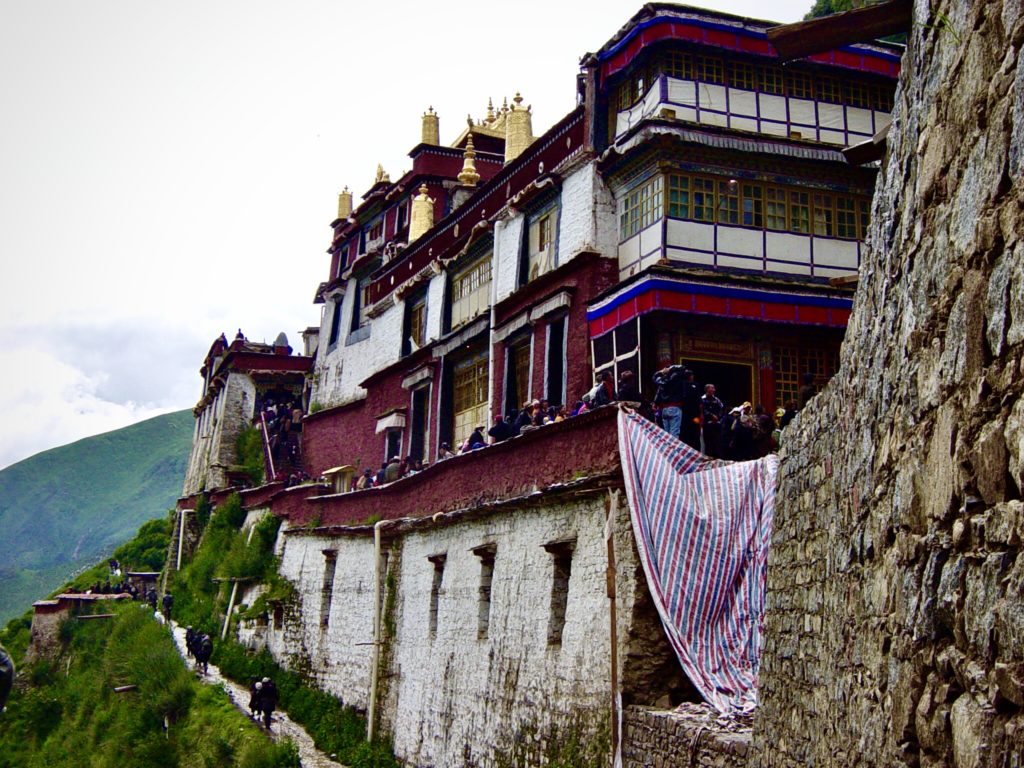
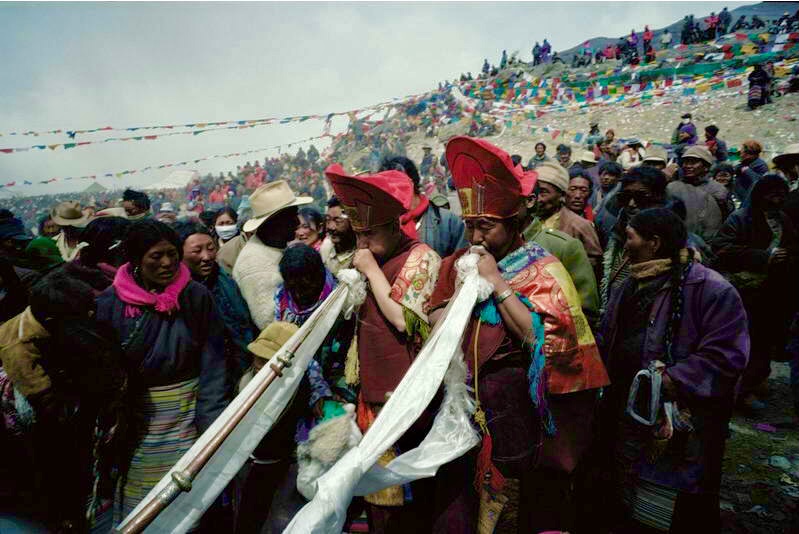
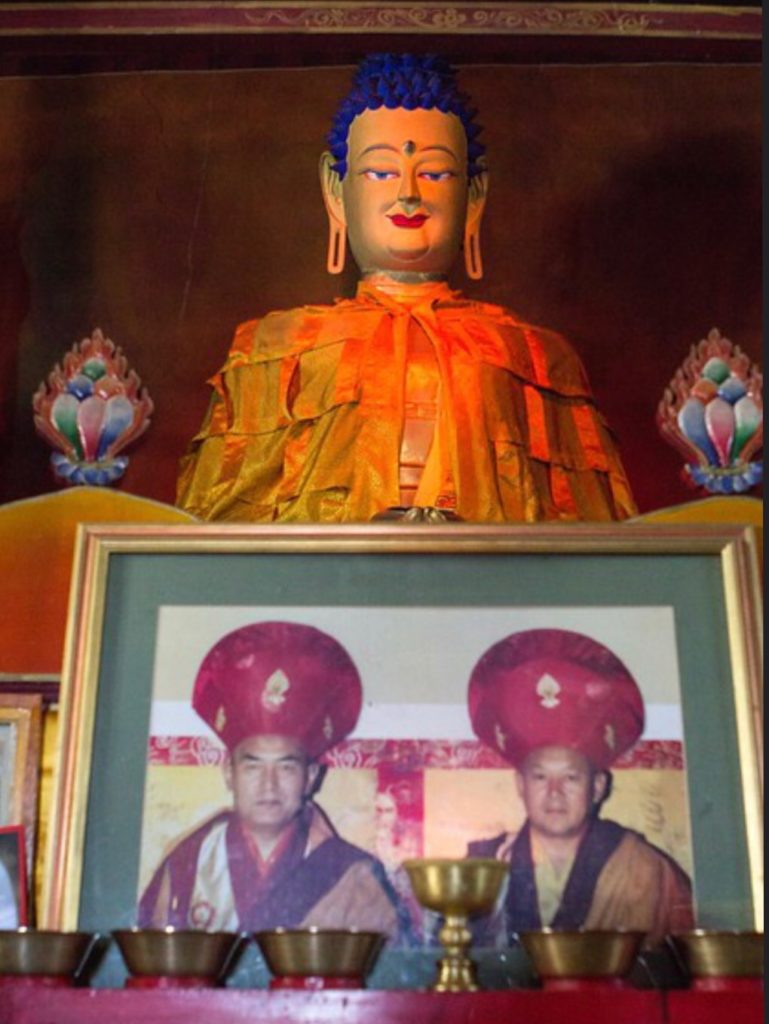
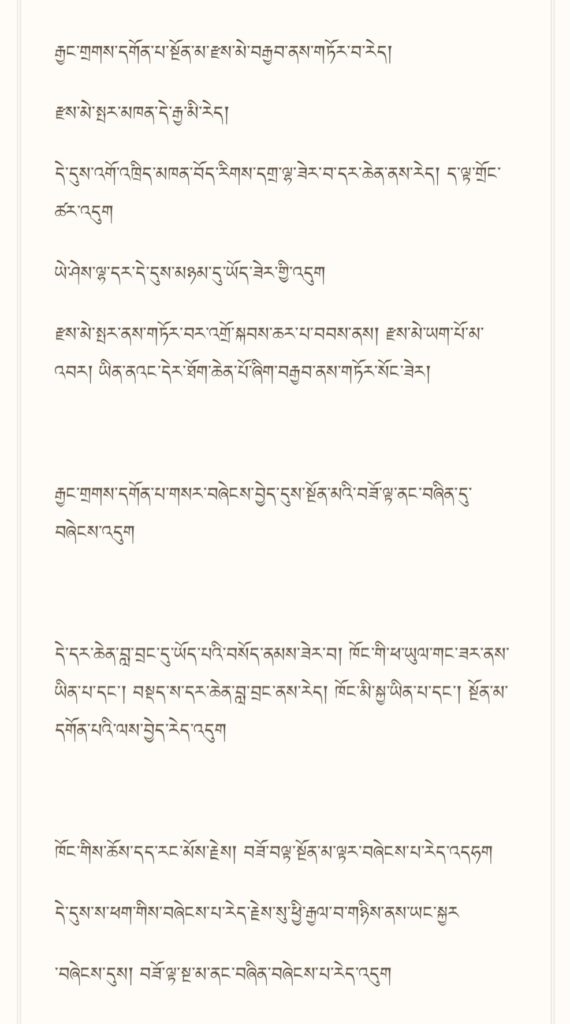

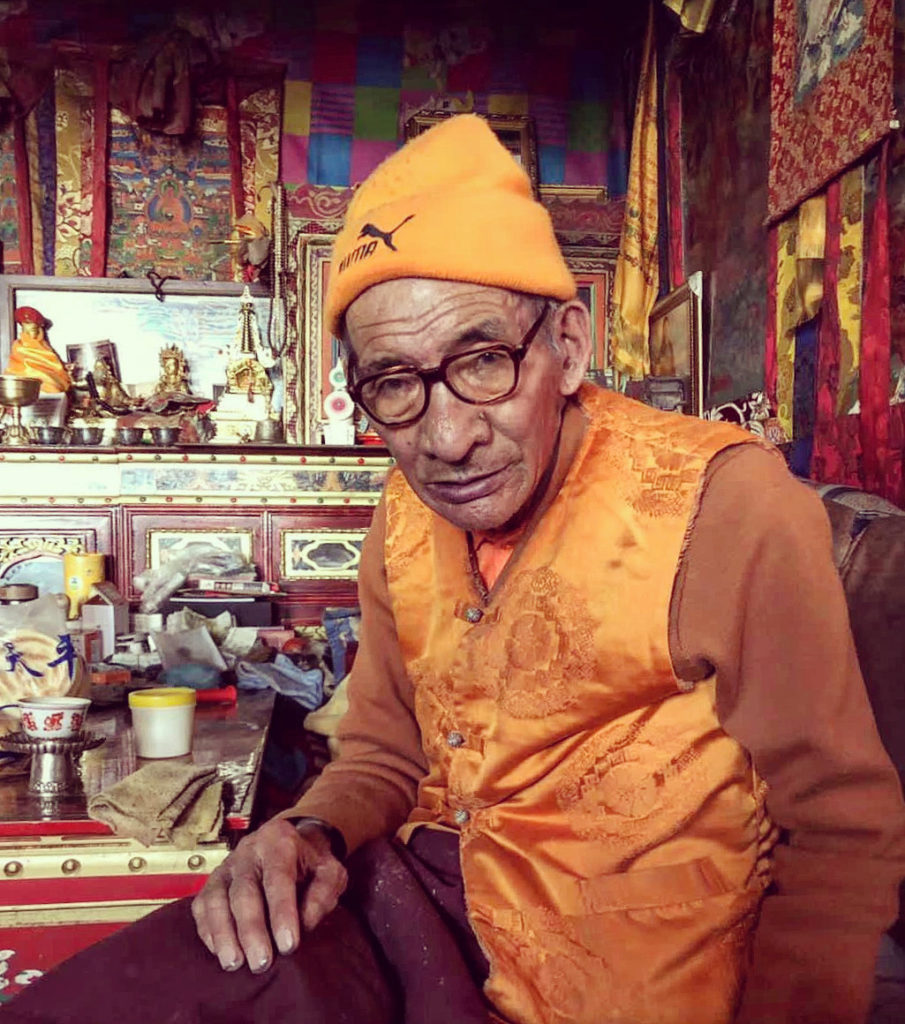
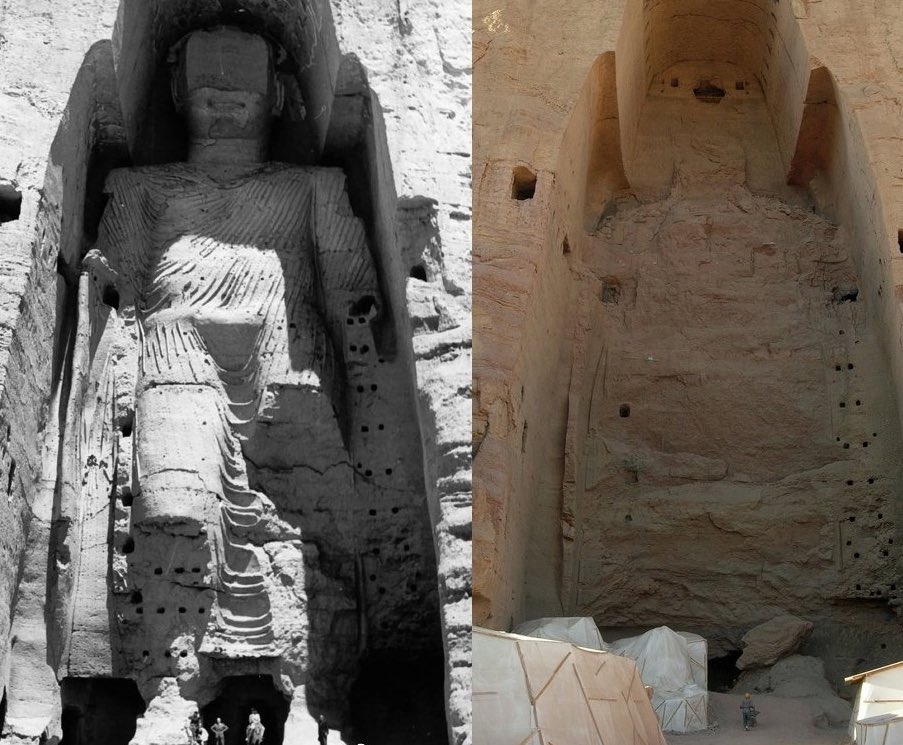
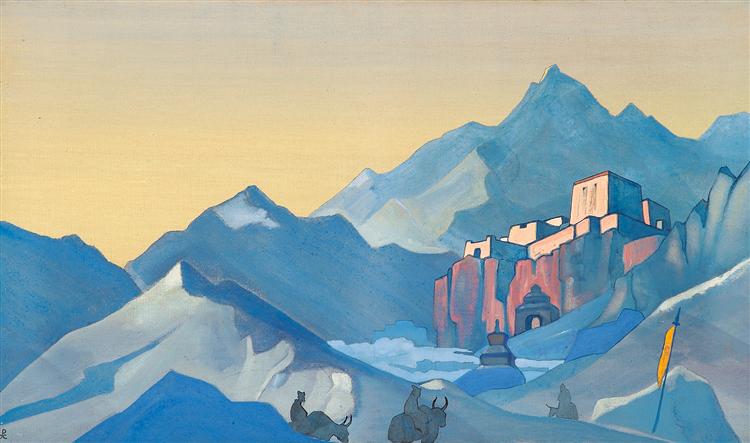



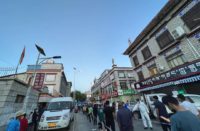
Follow Us!